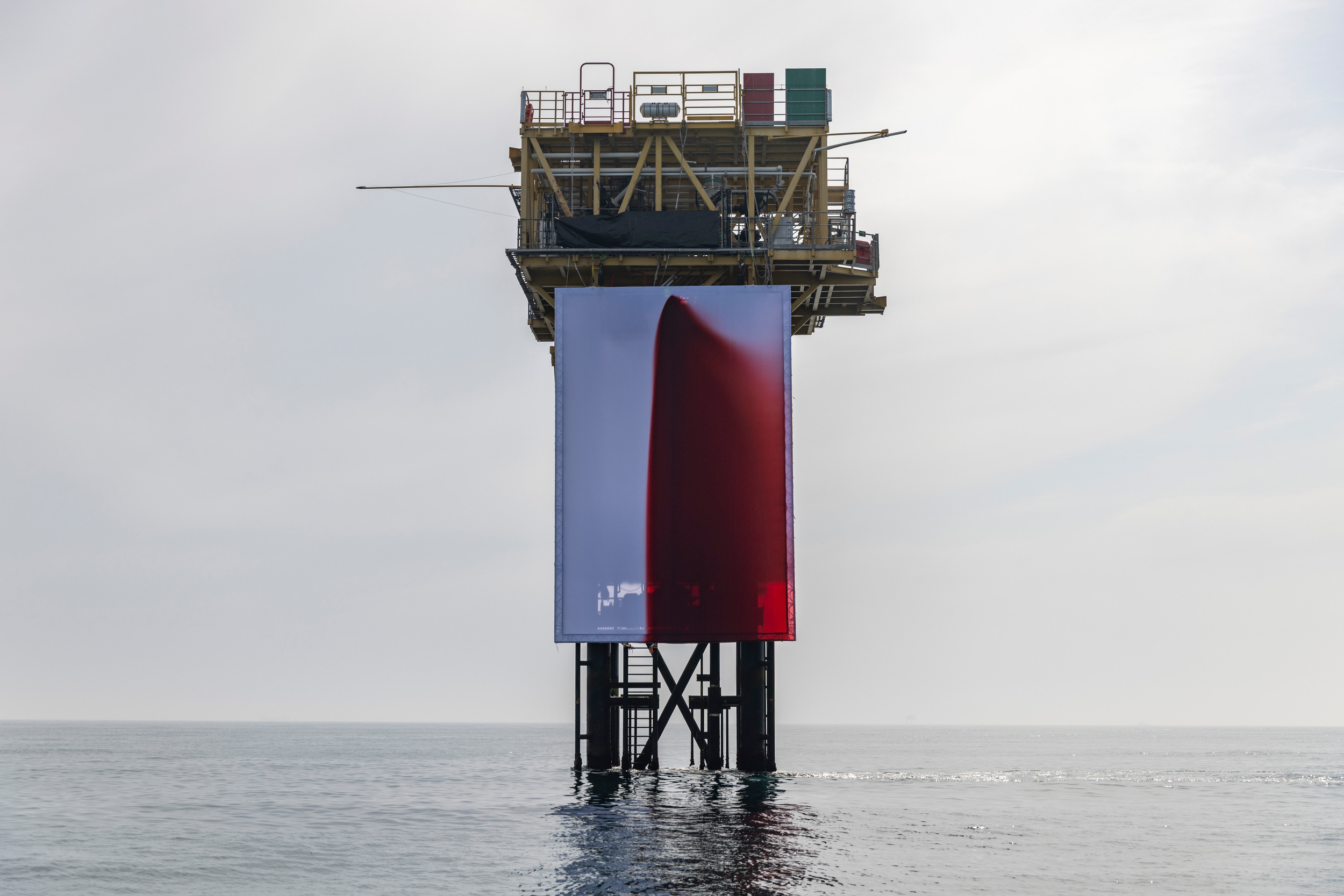
Greenpeace activists have mounted a striking new artwork by acclaimed artist Anish Kapoor onto Shell’s active gas platform Skiff, located 45 nautical miles off the Norfolk coast in the North Sea. This marks the world’s first installation of a large-scale artwork on an operational offshore fossil fuel extraction site.
The piece, titled BUTCHERED, was created specifically for this protest action and was unveiled as the UK and parts of Europe endure a severe heatwave, wildfires, droughts, and floods linked to climate change.
Seven Greenpeace climbers boarded the Shell platform on August 1, 2025, and securely attached a vast 12 by 8-metre canvas to the structure. Using a high-pressure hose, they then pumped 1,000 litres of a blood-red liquid—made from seawater, beetroot powder, and non-toxic pond dye—onto the canvas. The result was a dramatic crimson stain symbolising the environmental and human damage wrought by the fossil fuel industry.
In a statement, Kapoor said:
“The carbon dioxide released by burning fossil fuels is invisible, but we are witnessing the devastation that its extraction wreaks on our world. What still remains largely hidden is the responsibility oil giants like Shell bear for causing this destruction and profiting from worldwide suffering. I wanted to make something visual, physical, visceral to reflect the butchery they are inflicting on our planet: a visual scream that gives voice to the calamitous cost of the climate crisis, often on the most marginalised communities across the globe.”
Shell, which posted £54 billion in profits in the two years following the invasion of Ukraine, paid only £1.2 billion in UK taxes during the same period—roughly 2% of its global earnings. Studies estimate Shell’s carbon pollution over three decades has caused at least $1.42 trillion in climate-related damages worldwide.
Despite warnings from scientists and climate experts, Shell plans to expand fossil fuel extraction with 700 new oil and gas projects in development. This expansion stands in stark contrast to the disproportionate impact of climate change on low- and middle-income countries, which contribute minimally to global emissions but suffer the worst consequences.
Philip Evans, Senior Campaigner at Greenpeace UK, said:
“Extreme weather is hitting close to home, but the extraction of fossil fuels driving the climate crisis is often out of sight. This artwork is a visual gut-punch that makes visible the suffering and damage caused by the oil and gas industry right at the place where the harm begins. While the fossil fuel sector makes billions from climate destruction, ordinary people are left to pick up the rising costs of flood damage, droughts and wildfires. Governments need to start holding oil giants like Shell to account and make them pay for the enormous damage they are causing.”
Kapoor joins a growing number of public figures supporting the Polluters Pay Pact, a Greenpeace-led global campaign demanding governments tax fossil fuel companies to fund climate adaptation and recovery efforts for affected communities worldwide.
The UK government is being urged to introduce new taxes on fossil fuel extraction and shareholders to raise billions in aid for those most vulnerable to climate change. A recent survey found that nearly 80% of UK residents and 81% globally support taxing polluters to address environmental damage.
This installation follows Kapoor’s previous activism, including his 2019 call for the National Portrait Gallery in London to cut ties with oil giant BP.
Featrured image: Activists install BUTCHERED by Anish Kapoor onto active Shell Platform. © Andrew McConnell / Greenpeace
Elena Leo is the Arts & Lifestyle Editor of Ikon London Magazine.



